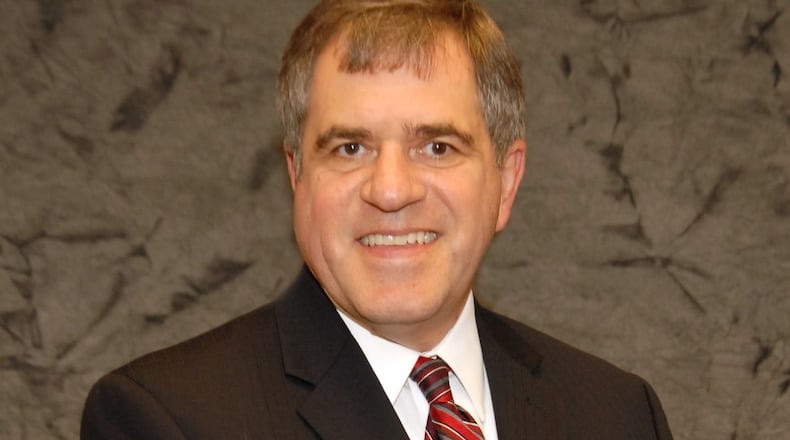Huddle likened parts of the newsletter to critical race theory. He said critical race theory is “reverse race discrimination” and akin to education under the Nazis, and that it will soon be forced upon the nation’s students. Huddle did not return requests for comment for this article by the time of publication.
Critical race theory is an academic movement that various experts, supporters and opponents define differently. Key tenets of the theory include acknowledging that race is not biologically real but socially significant and that racism is embedded in institutions like the American legal system.
Huddle’s remarks came after parents raised concerns about a newsletter called “Acceptance Articles” that is published by the Social Justice Committee, a group of teachers and administrators formed this school year. The five-page newsletter was emailed to parents and staff in April and contained, among other content, student testimonials.
Huddle criticized a question included in the newsletter that asked, “In what ways are we complicit in perpetuating systemic oppression?”
According to an audio recording of the meeting, Huddle said there is no evidence systemic racism exists and while no one disputes that oppression has existed, especially during the time of slavery, society has improved.
“ We tried to get better with that and change that,” he said. “It’s not perfect. No one’s saying that it is. But to take the other side of that and say no matter what you do, no matter what you say, no matter what you think, because you have less melanin in your skin you are a racist and you can’t do anything to change it.”
Joyce Coney-Lacy, a Stebbins High School teacher, responded later in the meeting, “This system has been created and it does, whether you want to admit it or not, unreasonably treat people of color.”
“Well if it’s systemic, give me the numbers,” Huddle said. “There’s never been any number that shows that.”
Ohio School Boards Association President-elect Robert M. Heard Sr., a member of the Cleveland board of education, said he is still considering all sides of what happened.
“Personally, I do believe that systemic racism is real and we all need to talk about it,” he said. “From a OSBA standpoint, I believe that we continue to emphasize the value of inclusion and diversity amongst our member districts. These are never easy topics to talk about.”
During his comments last week Huddle said a poem written by a Mad River teacher that was included in the newsletter was inappropriate. The first lines of the poem, which Huddle referred to, are: “I am ashamed. Ashamed of my white privileged skin. Ashamed of my white brothers and sisters with their small minds killing my innocent brothers and sisters because of a color.”
“I don’t want someone saying, ‘Because you’re white, I’m ashamed of you,’ or calling me simple minded,” he said.
Huddle said the newsletter had some meaningful content but suggested that the school district suspend it.
About 73% of Mad River students are white, more than 9% Black, 6.5% Hispanic, more than 2% are Asian or Pacific Islander and nearly 9% multiracial, according to the latest data available from the Ohio Department of Education.
Mad River Schools does not teach critical race theory and is not considering including the theory in its curriculum, according to district spokeswoman Jenny Alexander.
The term became a flashpoint nationally after President Donald Trump named it in his September 2020 executive order banning many kinds of inclusion and diversity training for federal employees.
Last week, Congressional Republicans condemned a proposed program from the U.S. Department of Education that would award grants to encourage schools to incorporate lessons “that reflect the diversity, identities, histories, contributions and experiences of all students” as promoting critical race theory. Also last week, Idaho passed a law banning the teaching of critical race theory in schools.
“There is something called critical race theory,” Huddle said. “It’s starting to seep into our schools … I’ve never been more passionate about something than I am about this. Critical race theory says that the most important thing of who you are is your race. Another way to look at it, the most important fact of who you are is how much melanin you have in your skin … Study it for yourself, otherwise you’ll lose America as you know it. Someone will tell you how to think, what to think and when to think it.”
Several teachers present at the meeting objected to Huddle’s statements. Amy Holbrook, president of the Mad River Education Association, said it was “devastating” to hear the board member’s remarks on discussing race with students, something teachers deal with every day.
“Why is the school board asking us to consider things that are not in alignment with what the Ohio Department of Education expects, what our families expect and what our students expect?” she said.
Mad River students are willing to have these challenging conversations about race, Holbrook said.
In an emailed statement later, Holbrook said: “Mr. Huddle’s unexpected, inappropriate remarks did nothing to address how we as educators will help all students recover from a year filled with academic, social and emotional challenges.”
Mad River Superintendent Chad Wyen directed questions to the district’s communications department. Mad River school board President Julie Denning and Vice President Ruth Newhouse did not return voice mails or emails requesting comment.
The Mad River Board of Education emailed a statement and said there would be no further comment: “When you see administrators, union leaders, parents, and board of education members all in a room together that is very powerful and says we are there to understand each other. This was an open and honest discussion. We now must find a common ground that supports our students and their families. There may be members of the community who are upset about what happened during our board meeting. As a district, we are resolved to connect with parents, students, staff and community members to listen and determine how the district can improve.”
About the Author

